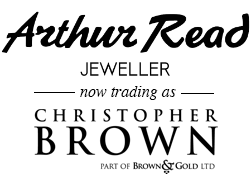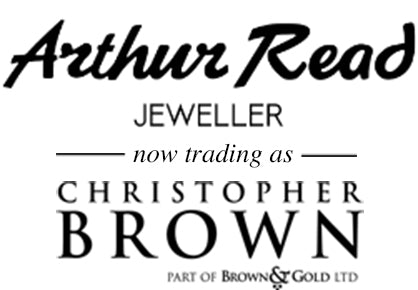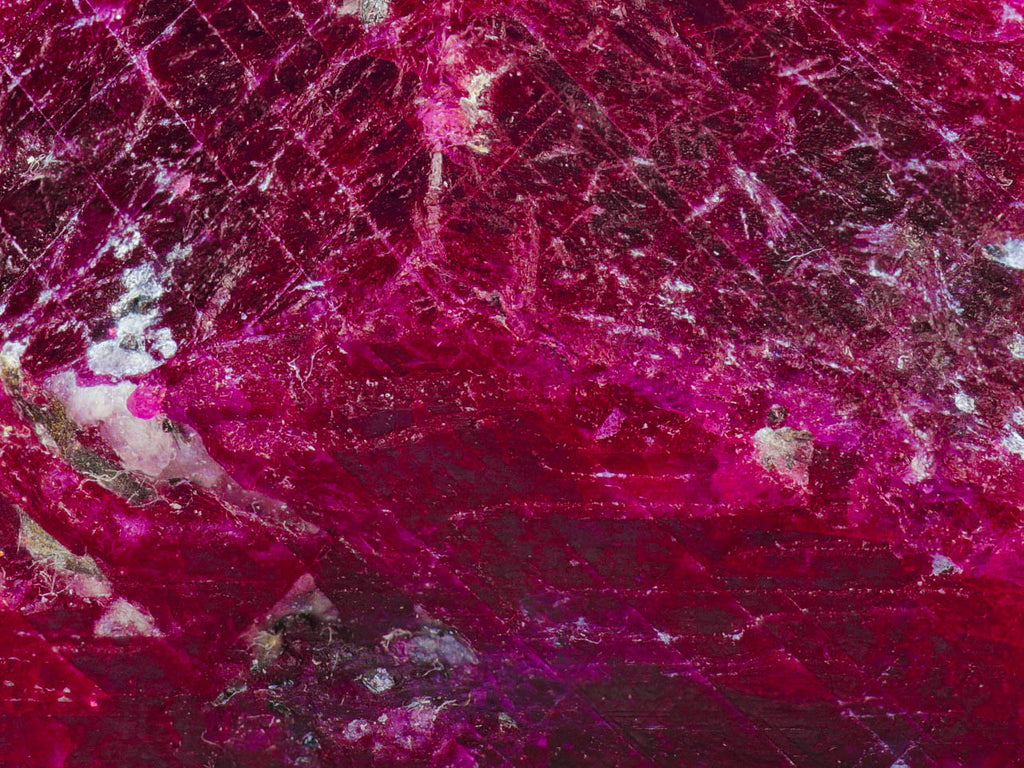Guide To Rubies
- 01 Nov 2019
- Daniel Read
Corundum is the name given to a family of gemstones, all with the same basic chemical make-up - aluminium and oxygen. The differences come in the elements that are present as small amounts within the stone. They don't have to be there to make the stone a corundum, but they do give us the different names. There are two main names for corundum - those that are coloured by chromium, which gives a red colour (and which we call ruby), and those that are coloured by any of a range of other elements that cause a variety of colours, and these are termed 'sapphire' (unless it's blue, the word 'sapphire is usually preceded by the colour).

HOW TO IDENTIFY A RUBY
Gemmologically, ruby's properties will enable any gemmologist to identify it. It has a refractive index (basically how it returns and interacts with light) of 1.76 1.78 and a bright vitreous lustre. These combine to give the stone that sparkle that makes it so appealing. It's also a very hard stone, rated at nine on the internationally-recognised Mohs' scale, ensuring that it will retain its finish for years to come if looked after carefully. Very few other commercial gemstones approach this level, so while ruby can scratch a vast range of stones, very few (notably diamond) can actually inflict damage.
Ruby can also show a special optical effect, if the right type of inclusions are present. If there are parallel sets of thin fibrous or needle-like inclusions present, these can give a silky look to the stone, and if they are there in sufficient quantity, they can actually cause an effect known as 'asterism', whereby a reflective six-rayed star appears on the stone.
This is only seen in stones cut as cabochons, as the effect tends to reduce the transparency of the stone, but they can be a beautiful look. Some rubies can also fluoresce noticeably under a long-wave ultraviolet light - the type found in lights used for checking bank notes - try it, it's a great effect to see.

A LITTLE USEFUL MYTHOLOGY
Ruby is one of the 'big four gemstones, and is the birthstone for July. It's also the stone used to celebrate the 15th and 40th wedding anniversaries (so a customer might have two chances in case they forget the first!). It's also been thought of as being a stone of love and has the ability to protect the wearer from illness. In older times, any red stone was thought of as being ruby and this led to some famous rubies not quite being what the purchaser thought they were a prime example being the Black Prince's Ruby, in the Imperial State Crown in the Tower of London. This is actually a large red spinel, not a ruby.

FINDING RUBIES
For sourcing, the best rubies are thought to come from Burma (now Myanmar), but they are also found in Thailand, Sri Lanka, Vietnam and other places. The best coloration is referred to as pigeon blood', although (thankfully) it's not often that this colour comparison is put to the test! The majority are routinely subjected to a form of heat treatment that enhances the red colouration, and this is a permanent, irreversible treatment that has been carried out for decades Other, less acceptable, treatments exist, such as glass-filling, which should always be disclosed, not least because this treatment can affect the durability of the ruby. Luckily, most gemmologists would be able to spot this form of treatment. At the end of the day, though, it's the colour and beauty that makes ruby an eternal stone.
Taken from The Guild of Jeweller's Coloured Stones Guide Vol.1



Comments
USTmDptAxB
uZnsKIdegTw
pcwdlmtHKiX
YLaSenhUpbRwE
suvDZXzbR